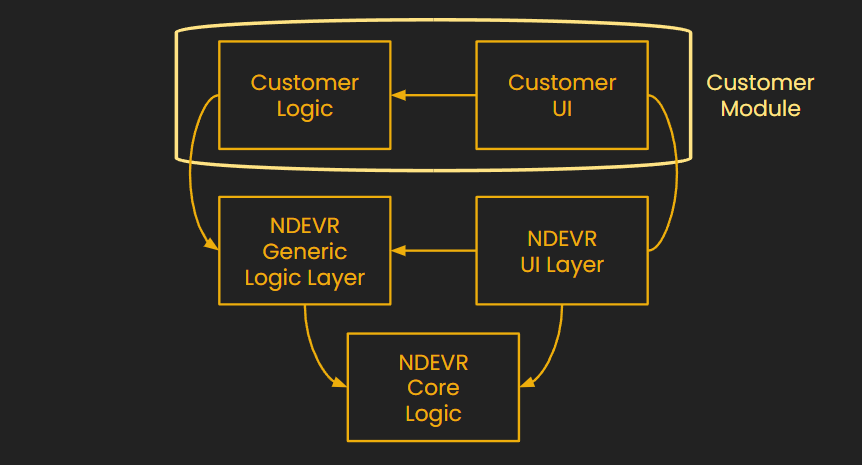NDEVR employs the dynamic linking of logic groups in reconfigurable ways, which involves constructing applications as modular components that can be inserted or removed, as opposed to having them operate as standalone programs.
The NDEVR software is divided into modules. Modular software design is an architectural approach in which a software application is divided into distinct, independent modules, each responsible for a specific aspect of the system’s functionality. These modules interact with one another through well-defined interfaces and can be updated, replaced, or extended independently without affecting other parts of the application.
Each module is designed to be self-sufficient, handling a unique portion of the application’s functionality, such as user authentication, data processing, or user interface components. When working together, these modules form a cohesive and functional application that is easier to maintain and scale.

The advantages of our business model are incredibly apparent. Here are just a few of NDEVR’s strengths.
NDEVR often faces changing customer demands, evolving industry standards, and technological advancements. Modular design allows us to respond quickly by updating or replacing individual modules without overhauling the entire system. This flexibility is especially valuable for businesses in highly dynamic markets, like tech and finance, where rapid adaptation can provide a competitive edge.
In a modular architecture, teams can work on different modules simultaneously, reducing bottlenecks and accelerating the overall development timeline. Additionally, because modules are self-contained, testing and debugging processes become more efficient, enabling faster iteration and more rapid product releases. This approach is particularly useful in large-scale organizations, where multiple teams collaborate on complex applications.
With modular design, companies can isolate issues within specific modules, making troubleshooting and maintenance more manageable. Modules that work well in one project can also be reused in other projects, saving time and reducing the need for redundant coding efforts. For example, a payment processing module developed for one application can be used in multiple applications across the company, standardizing the payment experience and saving development resources.
Modular systems allow companies to scale individual modules based on demand. If a certain module, such as the data processing or search functionality, requires more resources due to increased usage, companies can allocate resources specifically to that module. This targeted scaling improves overall performance without requiring a complete system upgrade.